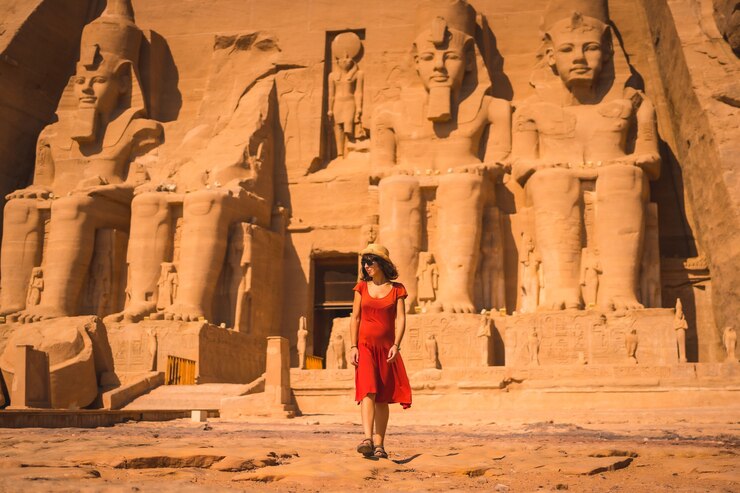Art has served as one of the most profound and enduring forms of human expression throughout history. From primitive carvings to grandiose temple paintings, Ancient Artz encapsulates the diverse ways that early civilizations documented their beliefs, daily life, and understanding of the world around them. Each art form tells its own story, contributing to a vibrant tapestry that spans continents and millennia.
In this exploration of Ancient Artz, we’ll dive into the unique art styles of various cultures, the techniques that defined these art forms, and their lasting impact on today’s world.
The Essence of Ancient Artz
Ancient art is defined by its timeless beauty, symbolic elements, and ritualistic significance. Unlike modern art, which often centers around individual expression, ancient art was deeply intertwined with community beliefs, religious practices, and cultural identity. Ancient Artz offers us a glimpse into the past, showcasing humanity’s earliest attempts at storytelling, record-keeping, and understanding the metaphysical.
A Brief History of Ancient Artz
From cave paintings that predate civilization to intricate metalwork from the ancient Near East, ancient art traces humanity’s journey from primitive societies to complex empires. Each civilization brought its own techniques, materials, and artistic focus, influenced by environmental resources, religious beliefs, and societal structure. Exploring these ancient art forms provides us with valuable insights into the evolution of creativity and craftsmanship across time.
Key Characteristics of Ancient Artz
Symbolism and Religious Significance
Most ancient artworks were deeply symbolic, intended to represent divine forces, spirits, or other-worldly entities. For instance, Egyptian art was known for its consistent portrayal of gods and pharaohs, symbolizing the divine nature of royalty. Similarly, Mayan art was filled with symbols representing gods, fertility, and the cosmos.
Natural and Local Materials
Ancient artists relied on the materials available in their environment. In ancient Egypt, limestone and sandstone were used for temples and sculptures, while the Chinese made use of jade and bronze. These choices not only influenced the look of the art but also its durability and the specific skills needed to work with each material.
Geometric Patterns and Abstraction
Many early art forms used repetitive geometric patterns, often for ritualistic or symbolic purposes. In ancient Greek art, geometric patterns represented order and harmony, while in African art, they carried symbolic meanings related to tribal identity and the spiritual world.
Ancient Artz Across Civilizations
Egyptian Art: Divine Representation and Monumental Architecture
Egyptian art, one of the most well-preserved forms of ancient art, was highly consistent, using a specific canon of proportions to depict gods and royalty. Egyptian art is best known for its sculptures, frescoes, and grandiose monuments, including the Great Pyramids of Giza and the Sphinx. Egyptian artists placed a high value on symbolism, with hieroglyphics and imagery conveying complex messages about the afterlife, cosmology, and divine order.
Mesopotamian Art: Innovation and Cultural Fusion
Located between the Tigris and Euphrates rivers, Mesopotamian art covers a range of cultures, including the Sumerians, Akkadians, and Babylonians. Mesopotamian art was known for its ziggurats (temple structures), cylinder seals, and realistic sculptures. It often portrayed gods, kings, and mythical creatures, emphasizing power and divine authority. Mesopotamian artisans developed one of the first known systems of writing, cuneiform, which influenced art and record-keeping for centuries.
Greek Art: Harmony, Proportion, and the Birth of Realism
Ancient Greek art revolutionized the portrayal of the human body, capturing realism and ideal beauty in sculptures like the Venus de Milo and Discobolus. Greek artists and architects were pioneers in techniques like contrapposto (a stance showing a shift in weight) and emphasized balance and proportion. Greek pottery, frescoes, and temples like the Parthenon are celebrated examples of the Greeks’ dedication to art that embodied both beauty and function.
Mayan Art: Cosmic Imagery and Ritualistic Significance
The Maya civilization, flourishing in present-day Mexico and Central America, was known for its vibrant and detailed art forms, ranging from murals to elaborate stone carvings. Mayan art was closely tied to religious ceremonies and celestial events, often depicting gods, jaguars, and serpents. Stone carvings and hieroglyphic inscriptions documented important historical events, royal lineage, and myths, showing the Mayans’ profound connection with the cosmos.
Chinese Art: Symbolism, Nature, and Philosophical Insight
Ancient Chinese art is renowned for its use of jade, bronze, and later porcelain, as well as its emphasis on balance, harmony, and nature. Chinese art was influenced by Daoism, Confucianism, and Buddhism, with each philosophy adding a distinct aesthetic layer. From the intricate bronze vessels of the Shang Dynasty to the Terracotta Army of the Qin Dynasty, Chinese art reflects themes of loyalty, honor, and the afterlife.
African Art: Ancestral Worship and Symbolism
Africa’s diverse cultural landscape gave rise to a variety of art forms, including sculpture, masks, and textiles. African art was often used in rituals and ceremonies, representing deities, ancestors, and tribal identity. The use of wood, bronze, and ivory highlighted the artisans’ expertise in working with natural resources, while masks and statues were crafted to honor spirits or facilitate communication with the divine.
Influences of Ancient Artz on Modern Art
Ancient Artz has had a lasting impact on contemporary art forms, with artists drawing inspiration from early techniques, motifs, and symbols. The revival of ancient art can be seen in Neoclassicism, which emulated Greek and Roman ideals, as well as in Art Nouveau, which incorporated natural and mythological elements.
Enduring Techniques and Styles
Modern artists and architects frequently adopt ancient techniques like fresco painting, mosaic, and marble sculpture, while geometric patterns from ancient African and Islamic art continue to influence modern design.
Cultural Revivals and Art Movements
Ancient art inspired movements such as Surrealism and Cubism, where artists like Pablo Picasso and Salvador Dalí incorporated African masks and mythological themes into their work, celebrating the raw creativity of ancient styles.
Ancient Artz Techniques and Materials
Stone Carving
Stone carving was one of the earliest and most durable forms of art, seen in the works of Egyptian, Mayan, and Greek cultures. Artisans used chisels, hammers, and natural abrasives to create sculptures, often depicting deities or revered leaders.
Fresco Painting
Ancient Greeks and Romans used fresco painting, applying water-based pigments on plastered walls. This technique allowed colors to remain vibrant over centuries, preserving murals that depicted mythological scenes, daily life, and natural landscapes.
Metalwork and Bronze Casting
Cultures like the Mesopotamians, Egyptians, and Chinese mastered the art of bronze casting, producing statues, vessels, and intricate decorations. Metalwork required precise techniques and contributed to the development of early technology and industry.
The Role of Ancient Artz in Cultural Identity
In ancient societies, art wasn’t simply decorative—it was an expression of shared beliefs and values, a way to preserve history and reinforce cultural identity. Egyptian tomb art, African tribal masks, and Greek pottery all served purposes beyond aesthetic enjoyment; they were tools of education, communication, and unification.
Conclusion
Ancient Artz offers a fascinating journey into the human spirit, connecting us with the first storytellers, craftsmen, and visionaries who used art to document their existence and interpret their world. From the temples of Egypt to the pottery of Greece, ancient art continues to inspire and influence, reminding us of the depth and diversity of human creativity. As we preserve and study these works, we gain a greater appreciation for the cultures that shaped human history, ensuring that the voices of the past continue to resonate in the present.
Frequently Asked Questions About ancient artz
What materials were commonly used in ancient art?
Ancient art used natural materials, including stone, metal, clay, and organic pigments. These materials were chosen for their availability and durability, influencing the style and technique of each culture’s artwork.
Why did ancient civilizations create art?
Ancient artz civilizations created art to express religious beliefs, commemorate leaders, record history, and celebrate nature. Art served practical, spiritual, and decorative purposes, reflecting the values and priorities of each society.
How does ancient art differ from modern art?
While ancient art focused on communal beliefs and religious symbolism, modern art often emphasizes individual expression. Ancient art also tended to use natural materials and symbolic proportions, whereas modern art has fewer restrictions on materials and themes.
What is the oldest known form of ancient art?
The oldest known form of art is cave painting, with examples dating back over 40,000 years. These early works, found in places like Lascaux, France, and Altamira, Spain, depict animals and abstract symbols.
How has ancient art influenced modern art?
Ancient artz has inspired techniques, motifs, and styles in modern art. Art movements such as Neoclassicism, Surrealism, and Cubism draw directly from ancient symbols, themes, and techniques, showing the enduring appeal of early art forms.
What are some examples of ancient art preservation?
Famous examples of ancient art preservation include the tombs of Egypt’s Valley of the Kings, the frescoes of Pompeii, and the rock paintings of Australia’s Indigenous cultures. These preserved works offer invaluable insights into ancient societies.










